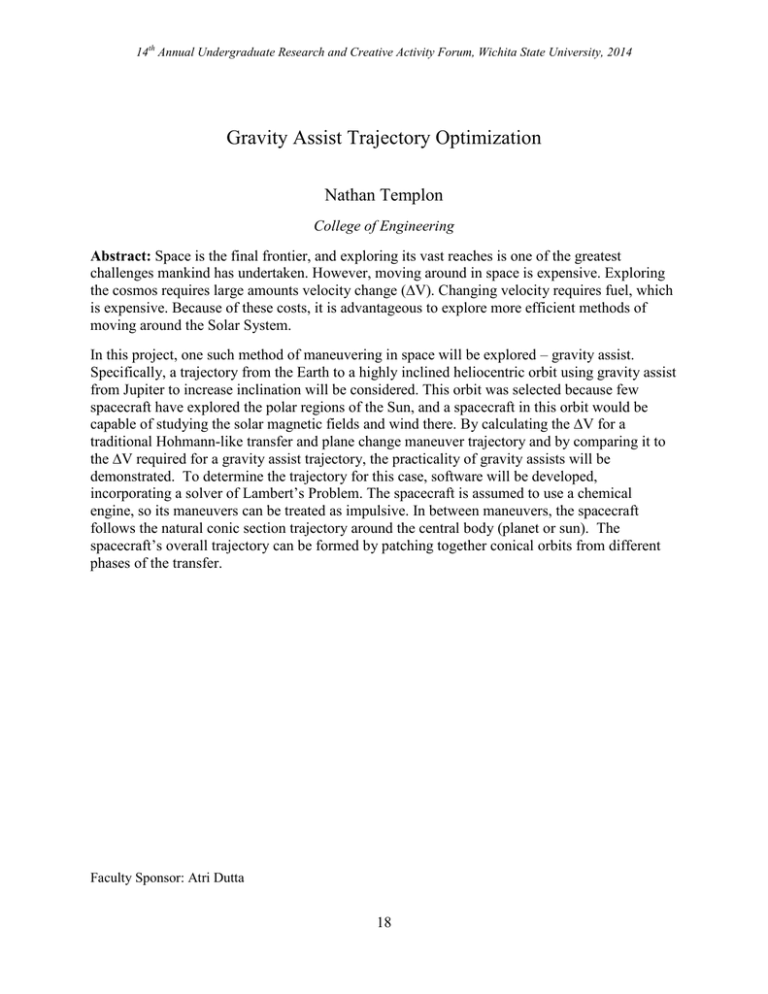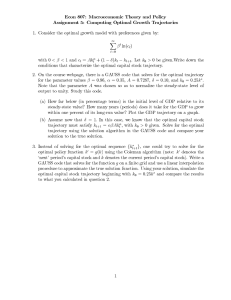Gravity Assist Trajectory Optimization Nathan Templon
advertisement

14th Annual Undergraduate Research and Creative Activity Forum, Wichita State University, 2014 Gravity Assist Trajectory Optimization Nathan Templon College of Engineering Abstract: Space is the final frontier, and exploring its vast reaches is one of the greatest challenges mankind has undertaken. However, moving around in space is expensive. Exploring the cosmos requires large amounts velocity change (∆V). Changing velocity requires fuel, which is expensive. Because of these costs, it is advantageous to explore more efficient methods of moving around the Solar System. In this project, one such method of maneuvering in space will be explored – gravity assist. Specifically, a trajectory from the Earth to a highly inclined heliocentric orbit using gravity assist from Jupiter to increase inclination will be considered. This orbit was selected because few spacecraft have explored the polar regions of the Sun, and a spacecraft in this orbit would be capable of studying the solar magnetic fields and wind there. By calculating the ∆V for a traditional Hohmann-like transfer and plane change maneuver trajectory and by comparing it to the ∆V required for a gravity assist trajectory, the practicality of gravity assists will be demonstrated. To determine the trajectory for this case, software will be developed, incorporating a solver of Lambert’s Problem. The spacecraft is assumed to use a chemical engine, so its maneuvers can be treated as impulsive. In between maneuvers, the spacecraft follows the natural conic section trajectory around the central body (planet or sun). The spacecraft’s overall trajectory can be formed by patching together conical orbits from different phases of the transfer. Faculty Sponsor: Atri Dutta 18

